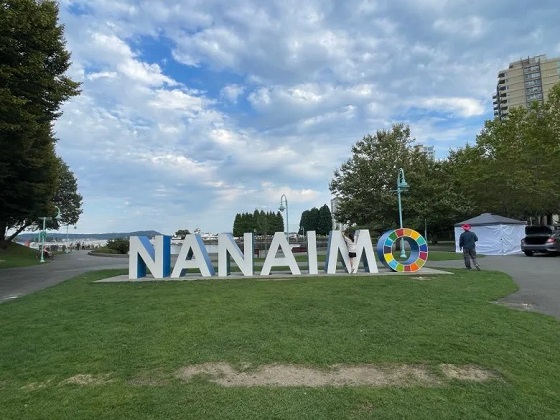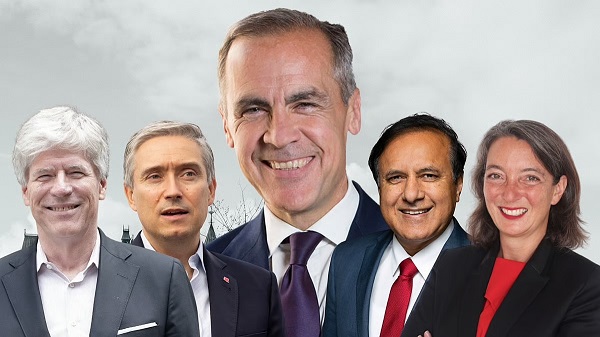Energy
Ottawa’s mixed signals create more uncertainty in energy sector
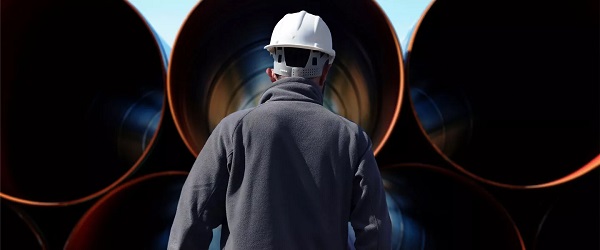
From the Fraser Institute
By Julio Mejía and Elmira Aliakbari
The Carney government continues to send mixed signals to Canada’s energy sector. Earlier this month, less than 48 hours after Prime Minister Carney expressed conditional support for new pipelines, Steven Guilbeault, a high-profile member of Carney’s cabinet, dismissed the need for additional pipeline infrastructure, claiming that the Trans Mountain pipeline is operating at “about 40 per cent capacity” while also citing a lack of private-sector interest in building east-west pipelines due to an upcoming peak in oil demand.
But claims about the Trans Mountain pipeline from Guilbeault—former Minister of Environment and Climate Change, now Minister of Canadian Identity and Culture—are inaccurate. They also overlook a key point—despite regulatory hurdles, the energy industry maintains a strong interest in building pipelines to meet the growing global demand.
Canadians may recall the Trans Mountain Pipeline project—running between Strathcona County, Alberta and Burnaby, British Columbia—was marked by delays and overruns. After the Trudeau government purchased it from Kinder Morgan for $4.5 billion in 2018, costs ballooned to $34 billion. Since its opening in May 2024—five years behind schedule—the pipeline has reached 89 per cent capacity utilization (more than twice what Minister Guilbeault claimed), with projections showing it could approach 96 per cent in the near future. In short, more pipeline capacity will be needed soon.
Minister Guilbeault’s statements about peak oil demand are also off the mark. For starters, the Energy Information Administration forecasts that global oil consumption will keep growing through 2050—not just until 2028-2029 as Guilbeault claimed. Firms such as Goldman Sachs and GlobalData suggest that oil demand is set to rise well beyond 2030. Meanwhile, the Organization of the Petroleum Exporting Countries (OPEC) goes even further, forecasting that global oil demand will continue growing past 2050 while stating there’s “no peak oil demand on the horizon.” Simply put, it’s shortsighted for the government to undermine infrastructure projects when multiple credible forecasts point to increased demand.
Moreover, pipelines transport more than just crude oil—they also deliver natural gas to domestic markets and coastal ports for export. Even the International Energy Agency (IEA), which Guilbeault cites as his source, projects that global demand for liquified natural gas (LNG) will continue to grow steadily through 2050. This strong LNG demand presents a significant opportunity for Canada to become a major LNG exporter and provide cleaner burning fuels. But to seize this opportunity, we need infrastructure to get our energy to tidewater.
Furthermore, Guilbeault’s claim that there’s no interest in building east-west pipelines also contradicts industry sentiment. A recent survey by KPMG, a leading audit and consulting firm, found that more than 80 per cent of Canadian energy and natural resource CEOs support additional pipelines and infrastructure on both the west and east coasts to access international markets.
Currently, most of our oil and natural gas exports go to the United States. This dependence on the U.S. for energy exports has made Canadian energy producers vulnerable to U.S policy changes (as seen with the recent threat of U.S. tariffs on Canadian energy). Building more pipelines would reduce our reliance on a single buyer and open access to Canadian refineries and ports, enabling us to export oil and gas to other markets, including both Europe and Asia.
In fact, it’s not just the industry that calls for more energy infrastructure. Recent polls indicate that most Canadians support building additional oil and gas pipelines to all coasts, and LNG facilities, to diversify energy exports beyond the U.S. Yet, federal polices continue to stand in the way of critical energy infrastructure. For instance, Bill C-69, also known as the Impact Assessment Act, has created massive uncertainty by introducing subjective criteria including “gender” implications into the evaluation of major energy projects. Similarly, the federal government’s greenhouse gas emissions cap, which exclusively targets the oil and gas sector, deters investment by effectively requiring a reduction in production and, in turn, reducing the need for new infrastructure.
Minister Guilbeault’s inaccurate statements and the Carney government’s continued mixed signals deepen the uncertainty for investors. Rather than creating confusion with conflicting statements, the federal government should provide clarity through a competitive regulatory framework—one that allows investors, guided by market realities, to determine when and where pipelines are truly needed.
Economy
If the Liberal government has a plan for the future of conventional energy, now would be a good time to tell us what it is.

From Energy Now
By Jim Warren
During the Cold War, Western journalists and political analysts were typically unable to penetrate the secrecy surrounding the machinations of upper level Soviet politics. They would struggle to discern who the top contenders were in the contest to replace the current party leader and what a new leader might mean for geopolitics.
The lack of trustworthy official information prompted Kremlin watchers to adopt some rather desperate and sometimes absurd methods for divining the twists and turns of internal Communist Party intrigues.
For instance, they would look at photos of the party leadership on the reviewing stand for the annual May Day military parade. They would identify how close or far each member of the official party on the dais was sitting from the party leader. The proximity rankings were then compared with where people were positioned in relation to the leader at last year’s parade. Those who stood or sat closer to the leader than they did the previous year were presumed to be on their way up. Those who stood further away might be on their way to Siberia.
After one month in office it looks like the Carney government will require observers to go to similarly ridiculous lengths to figure out what cabinet ministers really mean when making public statements. Last week, a column by Calgary Sun’s Rick Bell discussed Danielle Smith’s demand that the Liberals quit talking in riddles. Bell suggested the Liberals would rather “stick handle” their way through questions about their policy positions than clearly indicate what those positions are.
Supporters of the oil, gas and pipeline sectors in the West remain uncertain and unconvinced when it comes to the Liberal government’s commitment to getting new pipelines built. This week’s Speech from the Throne certainly didn’t clarify the government’s plans for conventional energy production and exports.
The prime minister’s flip flopping has been particularly unhelpful. He has distanced himself from the comments he made at Kelowna early in the election campaign. While speaking there, Carney temporarily impressed supporters of new export pipelines by indicating he would use the emergency powers of the federal government to ensure oil pipelines are built to connect the prairies with the East and West coasts. Several days later he indicated he wouldn’t use those powers to override the objections of Quebec.
Currently, the prime minister says he is taking a wait and see approach. Last week he said a new pipeline extending from the prairies to a Canadian coastline is one of many possibilities depending on what sort of consensus develops around energy policy. When fumbling to explain his consensus approach, he produced the sort of word salad Danielle Smith could justifiably refer to as “talking in riddles.”
During the new government’s first Question Period on May 28, Andrew Scheer asked Carney what he intended to do about Bill C-69, the infamous No More Pipelines Bill. True to form Carney avoided providing a clear answer to the question. He responded with irrelevant canned talking points that failed to mention either the noxious Bill or increasing oil export opportunities.
Last week, Tim Hodgson, Canada’s new Energy Minister told people at a Calgary Chamber of Commerce event some of the of things they hoped to hear. According to a National Post report on the event Hodgson said he “promised to deliver new infrastructure to get Canadian energy to the coast and ultimately ‘to trusted allies’ outside the U.S.”
Hodgson also had comforting words for those concerned that Canada’s cumbersome project approval process could stymie new pipeline approval and construction. He said “Canada will no longer be defined by delay. We will be defined by delivery.”
Talk is cheap. It is difficult to imagine how costly pipeline construction delays and cancellations can be prevented without first getting rid of Bill C-69. If Hodgson was truly being sincere you’d think he would have announced plans are in the works to overturn C-69 or to at least make serious revisions to it. Since he never went that far in his remarks, the presentation fell far short of announcing that a credible plan is currently being considered.
The week prior to Hodgson’s Calgary speech, his cabinet colleague Steven Guilbeault announced that Canada did not need any new pipelines because the Trans Mountain was not operating at full capacity. Guilbeault also said that by the time a new pipeline could be built the global demand for oil and gas will have declined so much it wouldn’t be needed. Unfortunately, if a new pipeline project isn’t approved and completed within the next 15 years, Gulibeault’s second point will be on its way to becoming a self-fulfilled Liberal prophecy.
So who really speaks for the government on conventional energy policy? We’ve been presented with three different versions from three of the people who sit around the cabinet table, one of whom is supposed to be the boss. Apparently it is no longer the case that ministers are duty bound to refrain from criticizing or deviating from government policy. Yet, as far as we know, nobody has been reprimanded for announcing an incorrect version of the Liberals’ conventional energy policy.
We have been left to guess at the answers to critical questions. Has the government initiated a plan for making policy changes that deal with the concerns of the conventional energy sector and the governments of Alberta and Saskatchewan? If so, could someone please tell us what it is?
Transparency and clarity on the conventional energy file seem especially important at a time when Alberta is posed to hold a referendum on separation. Perhaps the Liberals don’t appreciate how much the lack of a coherent position in favour of building one or more new pipelines threatens national unity. Maybe their standard election winning formula of “screw the West, we’ll take the rest,” reflects what they have adopted as their long-term approach to the legitimate demands of alienated Westerners.
Barring the appearance of a clearly articulated official policy statement we might need to adopt a Canadian version of Kremlinology. That’s about the only means we would have to determine who, if anyone, is running the government—more specifically its conventional energy policy. Knowing which ministers speak for official government policy and which don’t could be useful.
We might need to ask questions like the following:
- Which cabinet ministers get to sit at the cool kids’ table at the parliamentary cafeteria?
- Which minister’s favourite companies and environmental groups have received the biggest grants and contracts since Carney became prime minister?
- Which minister enjoys the most taxpayer funded flights and luxury hotel room stays to attend international gabfests like The World Economic Forum, in Davos, Switzerland or this year’s COP 30 conference in Brazil, etc.?
- According to Parliament Hill gossip, who is most likely bound for Siberia—Steven Guilbeault or Tim Hodgson? And, when, if ever, will Jonathan Wilkinson be released from the backbench gulag and allowed back into cabinet? And why was he sent there in the first place—not green enough, or too green?
Energy
The environmental case for Canadian LNG
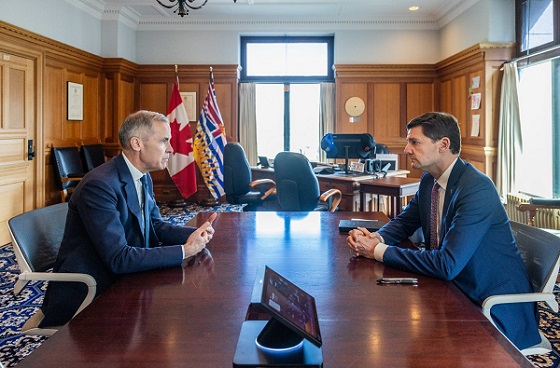
From Resource Works
Canada’s new prime minister has made some encouraging pronouncements recently about making Canada an energy superpower – a pledge repeated by King Charles in Tuesday’s throne speech.
Canada’s new prime minister has made some encouraging pronouncements recently about making Canada an energy superpower — a pledge repeated by King Charles in Tuesday’s throne speech.
Mark Carney, through the King, made the clarion call to make Canada “the world’s leading energy superpower in both clean and conventional energy.”
But how can Canada increase oil and gas production and exports while adhering to its green ambitions of net zero by 2050?
Two reports out last week — one from the Fraser Institute, the other from the Pembina Institute — help make a case for the net environmental benefits of a Canadian LNG export industry.
The Fraser Institute’s Exporting Canadian LNG to the World cites three B.C.-specific GHG life cycle models of coal-to-gas switching to conclude that, if LNG exports from B.C. replaced coal power in China, greenhouse gas emissions there could be reduced 34% to 62%.
If Canada were to double its current natural gas production and export it to Asia, “global GHG emissions could be reduced by up to 630 million tonnes annually,” the report asserts.
Canada’s total GHG emissions in 2023 was 694 million tonnes, according to Environment Canada. So, according to the Fraser Institute’s math, the equivalent of Canada’s total GHG emissions could be almost entirely erased, simply by exporting LNG to China to displace coal.
There’s a couple of flies in this ointment, which I’ll get to shortly, but the argument that there would be net environmental benefits to Canadian LNG exports still holds up, I think.
Coal accounts for about 45% of global emissions from fuel combustion, according to the International Energy Agency (IEA).
Switching from coal to natural gas in thermal power generation can result in a 50% reduction in CO2 emissions, according to the Intergovernmental Panel on Climate Change (IPCC).
But natural gas isn’t just a cleaner fuel, it’s also a critical feed stock — for which there is no real substitute — for an array of industrial and petrochemical processes, including fertilizer production. Like it or not, there will be a demand for natural gas for decades to come, and Canada is demonstrating that it can produce it with much lower emissions intensity than almost anyone else.
That natural gas can reduce emissions when it displaces coal is not theoretical — there’s proof. In the U.S., a 32% decrease in CO2 emissions between 2005 and 2019 in the power sector was attributed largely to coal-to-gas fuel switching, according to the Energy Information Administration (EIA).
“Lower CO2 emissions have largely been a result of a shift from coal to natural gas in the electricity generation mix,” the EIA concludes.
Now for the flies in the ointment.
First, while there could indeed be sizable global emissions reductions if Canadian LNG displaced coal power in China, India and other parts of Asia, we couldn’t claim those reductions under the current Paris Agreement model.
(Nota bene: Donald Trump is once again withdrawing the U.S. from the Paris Agreement, and the U.S. — now the world’s biggest LNG exporter — has no compunction over gobbling up as much LNG market share as it can.)

Canada and China are both signatories to the Paris Agreement. Each country produces its own climate action plans — nationally determined contributions — and can only count emissions reductions within its own national borders.
We can’t claim Chinese emissions reductions for our own, even if it were the result of Canadian LNG imports.
There has been talk of Internationally Transferred Mitigation Outcomes (ITMOs) that would allow Canada to be credited for emissions reduced in China from coal displacement through LNG. I don’t know why China, having achieved emissions reductions through coal-to-gas fuel switching, would surrender those reductions to Canada.
Achieving some win-win ITMO agreement would take some fancy bargaining, and perhaps Mark Carney is up to this task. He knows a thing or two about these sorts of things, having served as the UN’s special envoy on climate action and finance.
But even if ITMOs are not possible for Canadian LNG exports, there are still compelling economic and environmental arguments for Canada to act on its strengths — abundant resources, high demand for those resources, and comparatively high environmental standards.
Anti-fossil fuel activists will, of course, continue to trot out the canard that LNG is as bad, if not worse, than coal, because of the methane associated with upstream natural gas production.
It’s true that methane is the Achilles heel of natural gas and LNG. Because of its high global warming potential, even small amounts of methane — leakage rates of 2% or more — can begin to negate natural gas’s lower CO2 intensity.
Fortunately, methane leakage can be addressed through better plumbing, best practices, regulations, and better monitoring, and as the Pembina Institute points out, B.C.’s natural gas sector has leading the way here.
According to the BC Energy Regulator, measurements completed in 2021 estimate the methane intensity of B.C. natural gas production at just 0.38% to 0.48%, which is well below the 1.1% to 1.8% ceiling set for methane intensity in oil and gas production.
The result of this work on methane abatement is that B.C. has met its methane reduction targets for oil and gas two years ahead of schedule, according to the Pembina Institute.
Between 2014 and 2023, B.C. natural gas production grew 67 per cent, while methane emissions from oil and gas production fell by 51 per cent, the Pembina Institute notes in its report, Raising the Bar.
“B.C.’s success offers yet more evidence that methane emissions can be tackled without impeding the oil and gas industry’s operations,” Amanda Bryant, senior analyst for Pembina Institute, says in a press release accompanying the report.
“If anything, given the number of countries now considering new import standards that will privilege low-emissions energy products, stringent methane regulations – backed by transparent, best-in-class measurement data – are going to be key in bolstering the global competitiveness of our oil and gas sector.”
It must be added that, in addition to lower methane intensities, natural gas and LNG produced in B.C. also has lower CO2 intensities, thanks to electrification of the upstream and of some of the planned LNG plants. China, India, Japan, South Korea and other Asia Pacific nations will continue to buy natural gas and LNG from someone for years to come.
Shouldn’t that someone be Canada?
-
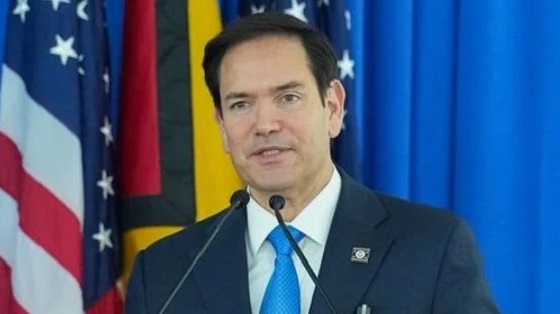
 Business2 days ago
Business2 days agoU.S. to deny visas to foreign censorship enforcers under new Rubio-led policy
-

 Crime1 day ago
Crime1 day ago“A Dangerous Experiment”: Doctor Says Ideological Canadian Governments Ignored Evidence as Safer Supply Exacerbated Fentanyl Death Surge
-
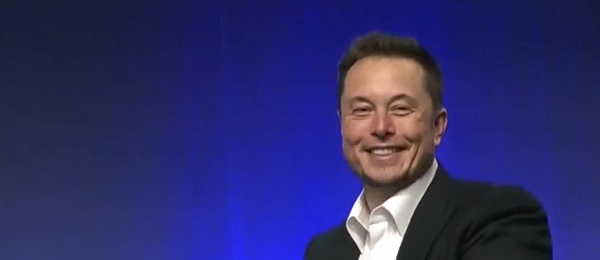
 Business2 days ago
Business2 days agoElon Musk’s Time At DOGE Comes To End
-

 Alberta1 day ago
Alberta1 day agoCanadian doctors claim ‘Charter right’ to mutilate gender-confused children in Alberta
-
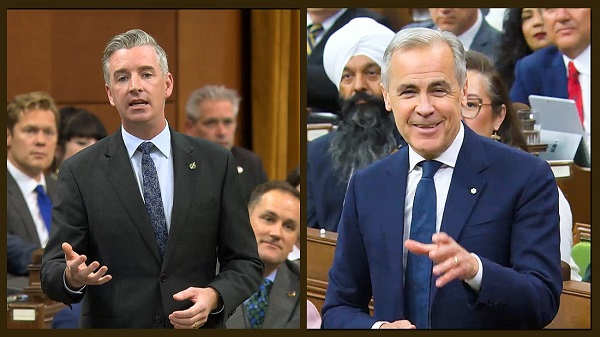
 National1 day ago
National1 day agoQuestion Period : Barrett vs. Carney Clash Over Offshore Investments
-

 Business1 day ago
Business1 day agoBig grocers rigged bread prices and most walked away free
-
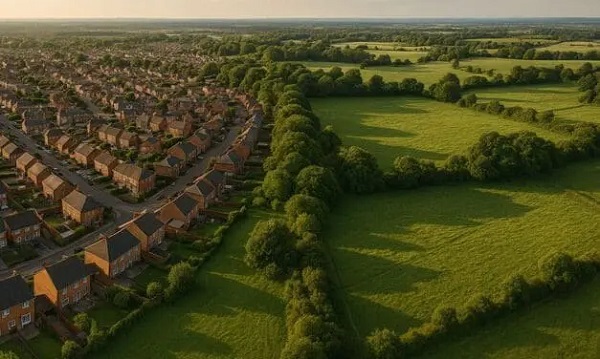
 Economy1 day ago
Economy1 day agoCanada’s housing crisis deepens as landuse policies push prices beyond reach
-

 Health1 day ago
Health1 day agoRFK Jr. cancels $700 million mRNA bird flu ‘vaccine’ contract with Moderna over safety concerns



